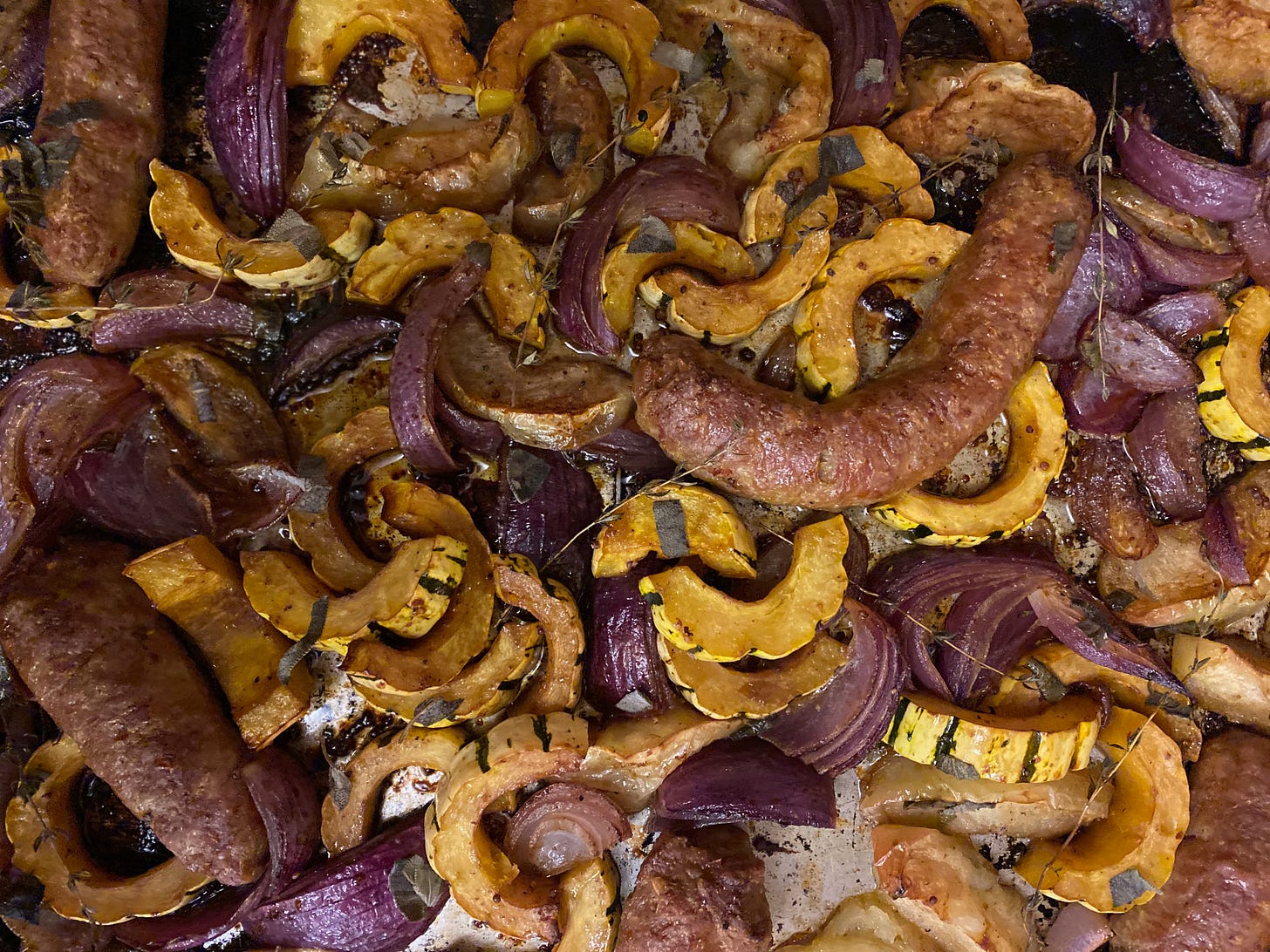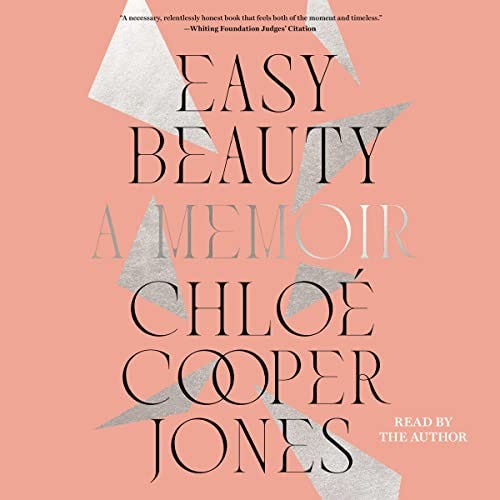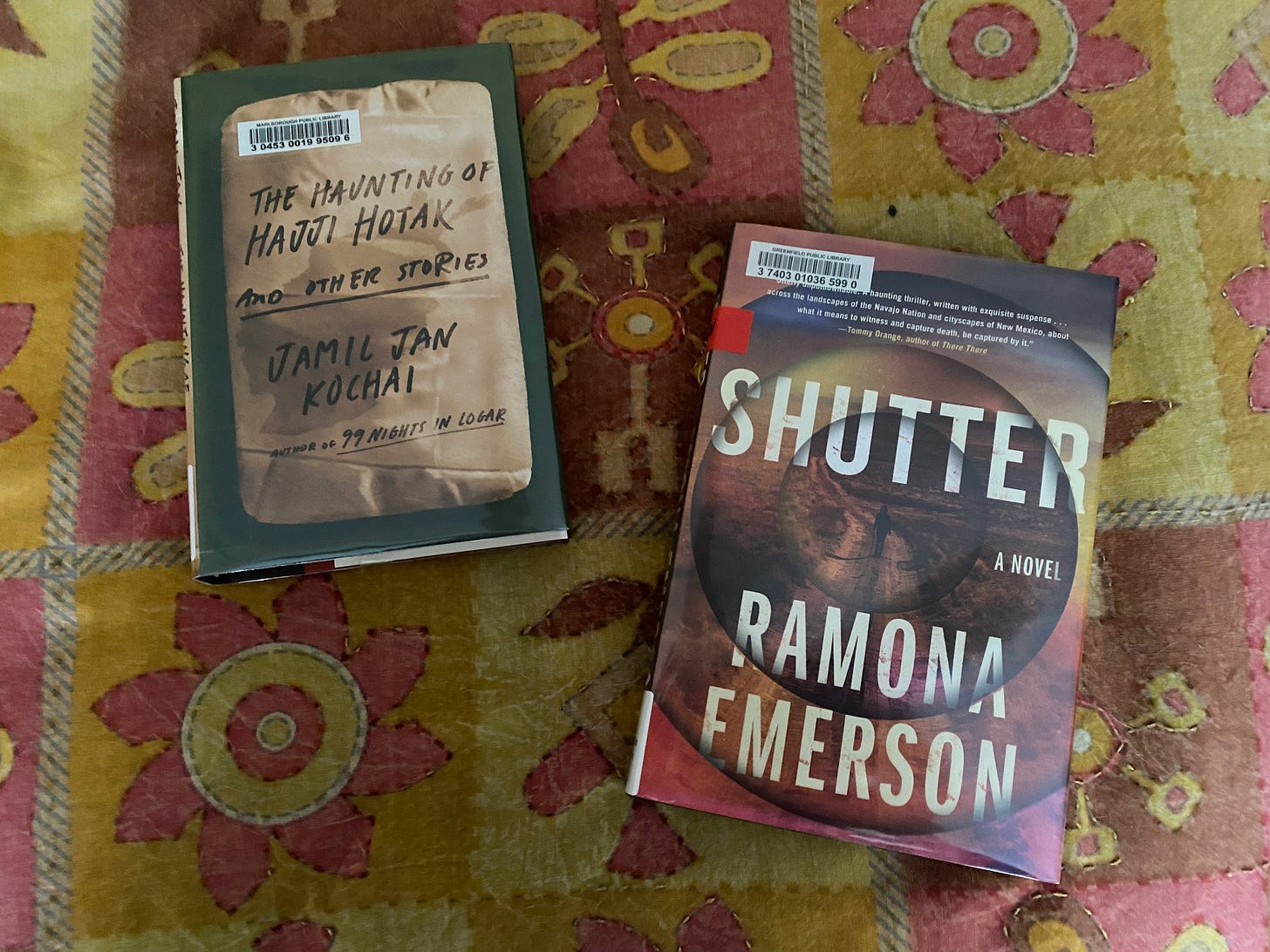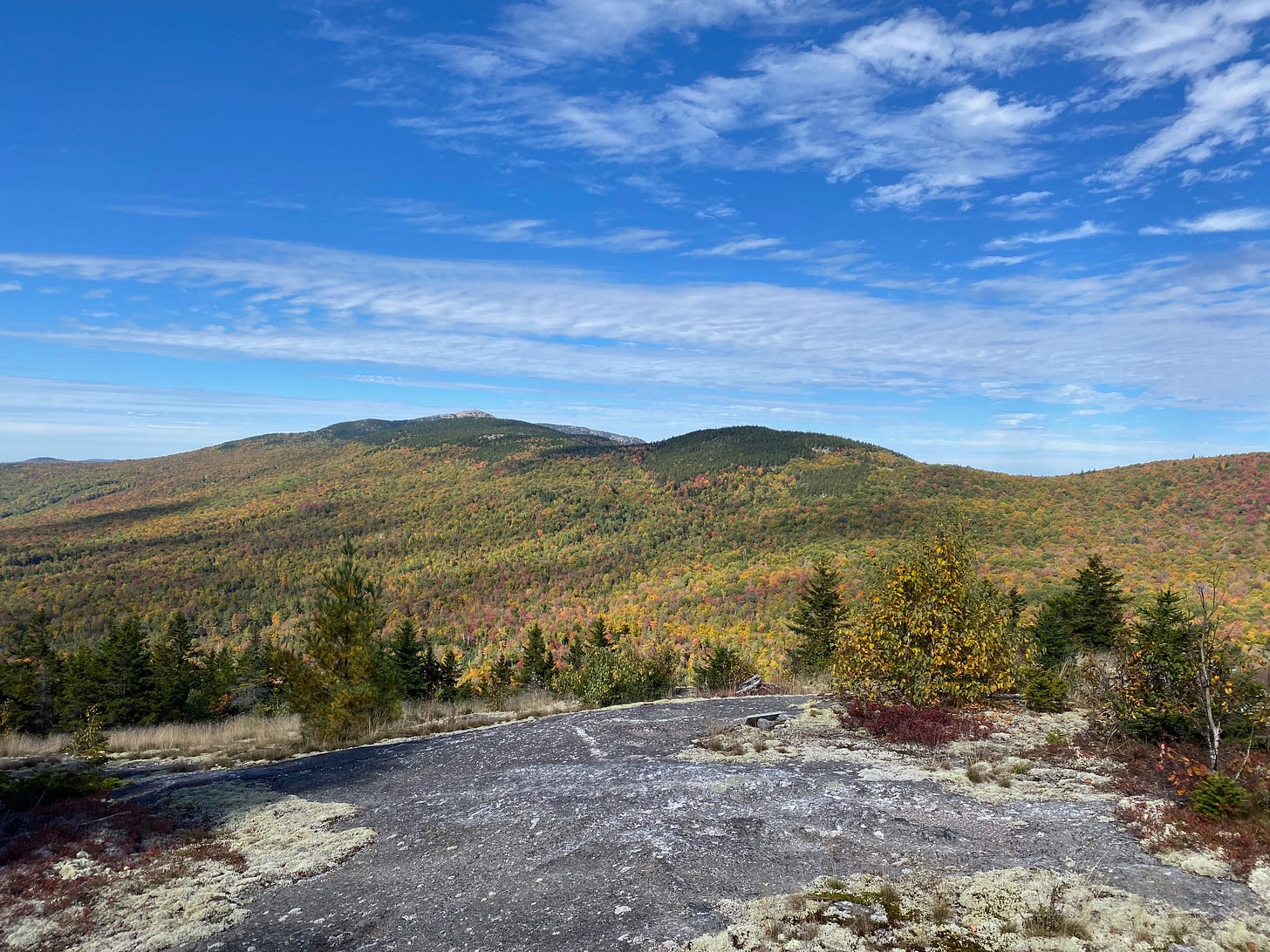Greetings, treat-eaters and book people! October has arrived, which means we’ve officially entered My Season. The leaves have started turning. The leaves! I do not have words for how deeply I love this yearly biological transformation.
It was so much fun talking book cataloging with many of you in the comments last week! I’m so glad that project resonated with so many people. I am also thrilled to report that one of this week’s books is one I never would have picked up before my massive shelf reorganization. My new bookshelves are already giving me gifts.
I’m not sure “Writing for Our Lives” conveys exactly what ties these books together, but I while I was brainstorming titles I couldn’t get Holly Near’s ‘Singing for Our Lives’ out of my head, so I went with it. These are all books in which queer women write themselves out and through and into new possibilities. Sometimes (as in the case of Dorothy Allison) they do so by literally writing and telling stories. Sometimes (as in La Bastarda and In the Field) they do so by rejecting the narrow stories the world tries to tell about them about themselves.
The Books
Backlist #1: La Bastarda by Trifonia Melibea Obono, tr. by Lawrence Schimel (Fiction, 2018)
I read this in the midst of my (so far) very disappointing National Book Award fiction longlist reading. After reading three longlisted books that were not for me, I put that project on hold and devoured this in one sitting. What a treat.
It’s a slim (88 pages, with a wonderful afterward) coming-of-age novella about Okomo, a queer teenager who lives with her strict grandparents in a small village in rural Equatorial Guinea. Her mother died shortly after giving birth to her, and she’s never met her father. She longs to find out who he is, but no one wants her to, especially her grandparents. On the first page her grandfather calls her father “a degenerate” and “a scoundrel” and accuses Okomo of “betraying the principles of the Fang people.” He’s furious that she’s curious about her father, that she has dared to express her curiosity, and that, in doing so, she’s undermined his authority as head of the family. This sets the tone for the whole book: her grandparents are not safe.
The only person with whom Okomo feels any kinship or closeness is her queer uncle, Marcelo, who is shunned by the village because of his refusal to adhere to heteropatriarchal norms of masculinity. He’s known around town as a “man-woman”, and Okomo’s grandparents forbid her from visiting him, though she does so anyway. She also befriends a group of “indecent” girls—more people her grandmother has forbidden her from talking to. When she encounters the girls for the first time, she remembers her grandmother’s warning:
Don’t be friends with those girls, they’re indecent and mysterious, I remembered my grandmother saying. But these three teenage girls defended my uncle because they thought he should live as a free man.
So she approaches them anyway. They invite her to come with them into the forest, where the four of them have sex together (it’s messy teenage sapphic excellence at its best). She soon falls in love with one of them. But of course her newfound freedom and happiness is challenged back in the village, and a series of devastating events forces Okomo to decide for herself how she’s going to live the rest of her life.
The whole story unfolds rapidly. Okomo meets Dina and is in love with her a few days later. All of the underlying tension bubbles up and bursts. There’s a fable-like quality to the pacing—event, consequence; event, consequence. But there’s nothing lacking in the story. Things happen fast, but every scene is vivid. Okomo’s world feels immediate and urgent. In under a hundred pages, Obono draws a rich, complicated portrait of a queer teenager coming of age in contemporary Equatorial Guinea, and she does so simply, without fluff or fanfare. Her prose is fluid, direct, often heartbreaking, and sometimes joyful.
There’s a lot of heavy subject matter, including abuse, sexual violence and rape, and forced outing. But Obono does not leave her characters in the midst of these violences. The book ends joyfully. It’s a coming-into story, a freedom story, a celebration story about the chosen queer family Okomo eventually finds in the forest.
When the girls first invite Okomo to have sex with them, she expresses her fear about it. Dina reassures her: “You don’t need to obey your grandmother, she isn’t here watching your every move. You’re in the forest—the Fang forest is a free space. Now you’re free.”
This idea of forest as free space, as queer space, comes up again and again. Okomo doesn’t escape to the big city to live her free queer life. Instead, she is invited by other queer people deeper into the forest, her ancestral lands. I love this exploration of forest as refuge, as naturally welcoming of queerness and transness. It subverts the narrative of the forest as a place of danger, monsters, fear. It immediately made me think of a passage from Carl Phillip’s brilliant prose poem ‘Among the Trees’ in his recent book Then the War. Musing on seeking out hookups in the woods, he writes:
Or if shame didn’t drive us there, a reasonable fear likely did. And then—remember?—that well-worn path where we found one another, the trees to either side like a lengthy convoy of fears that kept diminishing, the more south they shuffled—until there was no fear.
Abosede George’s afterward delves further into how ideas about Africanness and Un-Africanness complicate these intersections of queerness, forest, and African sexualities.
I read this book in an hour or two and I may read it again. There’s a lot going on in a mere 88 pages.
Backlist #2: Two or Three Things I Know for Sure by Dorothy Allison (Memoir, 1996)
Though it’s a memoir, this book is similar to La Bastarda in a lot of ways. It’s short (95 pages) and told in broad strokes. It also immediately make me think of another book I read recently and loved, Melissa Febos’s Body Work. Febos writes about memoir and trauma, and memoirs about trauma, and how such memoirs, especially when written by women, are often devalued. She writes:
I want more than mechanics, more than experimentation. I want to feel on the page how the writer changed. How the act of writing changed them.
I felt all of that while reading this memoir. The act of transformation, the truth of Allison’s own words transforming her life—that is clear on the page, bared open, vulnerable. Febos also explores how writing memoir can be both an act of art and an act of healing. This, too, is how Allison’s memoir struck me. Reading it felt intimate, at times uncomfortably so, though the discomfort I mean is the kind that is sometimes a gift. I felt viscerally that I was reading a book Allison had viscerally needed to write.
It’s about a lot of things. It’s about the women in her family, growing up poor in South Carolina, surviving childhood sexual abuse, coming into herself as a lesbian. It’s about the tangled histories of poverty, abuse, and determination that defined her childhood, histories that she has struggled to define herself against and within. It’s about her mother’s death, her relationship wit her sisters, and storytelling itself. All of this in less than 100 pages, many of which are filled with photographs of Allison and her family.
This swiftness, the shortness, is part of what makes this book work so well. Like La Bastarda, it feels pared down, but without any missing pieces. At times Allison writes with exquisite detail, rendering scenes and memories visible. Then, suddenly, her words turn into something that feels more like poetry, longing and seeking, full of beautiful metaphor and rock-solid truths. Always, as she recounts conversations and moments of grief, abusive relationships and healing queer kinship, sibling misunderstandings and stories passed down through generations, she is contemplating story itself: what is it for, what does it do, how does it work.
This book is both healing and art, a way through and a beautifully told record of that way—a guide and a remembrance. Near the end, she writes:
I know. I am supposed to have shrunk down and died. I know. I am supposed to be deeply broken, incapable of love or trust or passion. But I am not, and part of why that is so is the nature of the stories I told myself to survive.
Backlist #3: In the Field by Rachel Pastan (Historical Fiction, 2021)
This historical novel is loosely based on the life of Nobel Prize-winning scientist Barbara McClintock. McClintock, like Pastan’s fictional creation Kate Croft, won the Nobel Prize in Physiology or Medicine for her work on heredity in corn and her “discovery of mobile genetic elements”. It was work she did in the 1940s and 50s, though she wasn’t recognized for it until 1983.
I loved this book. I was also in a constant state of rage while reading it. I did a lot of yelling and cursing and groaning. The misogyny and sexism that Kate faces is constant. It’s not the only thing in the novel, but, fair warning, it’s exhausting. It’s exhausting, though Kate is certainly shielded by her whiteness. The book only addresses race obliquely, but this makes sense to me: Kate herself doesn’t realize how her much experiences as a woman moving through the world are affected by race.
Kate arrives at Cornell in 1920, where she falls in love with science. She soon realizes that she’s very good at it, particularly designing and implementing experiments. None of the men in her department recognize her talent, however, and, throughout her career, she is ignored, belittled, patronized, gaslit, and passed over for promotion. She faces injustice after injustice, often forced to silence herself in order to keep her place in the lab and her position at the university. The novel unfolds over thirty or so years, honing in on impactful moments in Kate’s life: her time at Cornell, her graduate work, a life-changing love affair, the intense, single-minded focus of her post-graduate work.
There’s so much science in this novel. Pastan describes Kate’s experiments with maize in detail, and it adds so much to the narrative. Kate is incredibly driven. She has to be, to succeed as a woman scientist in the 1930s, but it is also in her nature. Nothing excites her like the thrill of scientific discovery. The natural world and how it is made—cells and chemicals, genes and chromosomes—is endlessly miraculous and fascinating to her. Her fascination is contagious. I was riveted by her soliloquies about corn genetics.
But her intense drive also causes tension in her personal life. When she falls in love for the first time, her girlfriend, a doctor, doesn’t understand her need to work constantly. (To be fair, Kate does not understand the concept of work life balance.) Their love story is so tender, but it’s also full of real conflict. Her single-mindedness also plays a role in her relationship with her closest male friend and colleague, whose choices are often baffling to Kate.
I listened to this a few weeks ago, and I find myself thinking about it often. Pastan delves into questions that feel pressing today: What does it mean to do good work? How do we define success? What are the limits of scientific discovery? None of this exploration is heavy-handed; these are simply the questions that define Kate’s life.
I appreciated that there’s not much homophobia to speak of here. Misogyny, yes, but Kate’s life as a queer woman is relatively quiet and uneventful. She sciences her way through obstacle after obstacle, and finds her way to joy.
The Bake
I make a lot of delicious bakes. But sometimes I bake something that is just beyond. I also sometimes fantasize about being on Bake Off. I don’t live in the UK, and also baking under time pressure while being filmed for TV sounds actually horrible, so it’s just a fantasy. And in that fantasy, this cake wins me star baker because it’s perfect. “Positively scrummy,” as Mary Berry might say. No notes.
Spiced Chocolate Pear Cake
Adapted, not insignificantly, from Smitten Kitchen
Ingredients
70 grams (1/2 cup) all-purpose flour
50 grams (1/2 cup) whole-grain rye flour
1 Tbs baking powder
1/2 tsp ground cardamom (5-8 whole pods)
1/2 tsp ground star anise (1 whole pod)
3/4 tsp ginger
1/4 tsp salt
3 eggs
150 grams (3/4 cup) toasted sugar (toasted sugar is never necessary, but I do think it makes a difference here)
100 grams (3/4 cup) semisweet chocolate, chopped
3 pears, peeled and cut in a small dice
1 stick (8 Tbs, 113 grams) unsalted butter
Preheat the oven to 350. Butter a 9-inch springform pan and line the bottom with parchment. In a small bowl, combine the flours, baking powder, spices, and salt. Set aside.
In the bowl of a stand mixer fitted with the whisk attachment, or with handheld beaters, whip the eggs until they’re pale, thick, and have tripled in volume. It will take 6-8 minutes with a Kitchen Aid, and longer with beaters.
While the eggs whip, brown the butter. Melt it over medium high heat, swirling the pan now and again, until it becomes golden brown and smells nutty. It usually takes about 5 minutes. The butter stops bubbling and hissing so much right before it reaches that perfect shade of golden brown. Remove from the heat and set aside.
Add the sugar to the eggs and whip for another minute or so to incorporate. Turn the machine all the way down to stir (or the lowest setting on handheld beaters) and add the warm butter and flour mixture in alternating pulses: a third of the flour, half the butter, a third of the flour, the rest of the butter, the rest of the flour. Whisk until just combined—you don’t want to lose the volume! Finish mixing, gently, with a rubber spatula.
Pour the batter into the prepared pan. Scatter the pears and chocolate chunks on top. Bake for 40-50 minutes, or until a tester inserted in the middle comes out clean and the cake springs back lightly when pressed. Prepare to be amazed.
The Bowl and The Beat
The Bowl: Sheet-Pan Sausages with Apples, Squash & Onions
Oh, fall cooking. What a joy to cook in a season when it’s actually bearable (even desirable) to turn on the oven! I am ravenously devouring winter squash and sweet potatoes, apples and cauliflower. This is a peak fall meal—veggies glazed with cider syrup and roasted to honeyed perfection. I gobbled it.
Slice a delicata squash (or two) in half, lengthwise. Scoop out the seeds and cut into thick slices. Peel 2-3 red onions (or yellow ones, I just love the color contrast) and cut them into thick wedges. Core 2-3 apples and quarter them. Toss it all on a pan and drizzle with olive oil, cider syrup (this is my favorite, but a mix of honey and cider vinegar will be tasty, too), salt, and pepper (I often use Aleppo pepper instead of black pepper). Toss to coat and sprinkle a few fresh thyme springs around the veggies. You can add any kind of sausage to this—I had sweet Italian lamb sausages on hand and they were marvelous but anything will do. Nestle your sausage links among the veggies. Roast at 425 for 35-40 minutes, until the sausages are cooked through and the veggies are golden brown around the edges and starting to caramelize.
The Beat: Easy Beauty by Chloé Cooper, read by the author
This was already on my TBR, but a friend and subscriber recently mentioned loving it (thanks, Emily!), so I fast-tracked it to the top of my TBR. I love it so far. It’s my favorite kind of nonfiction, a blend of personal memoir, social commentary, and musings on art and writing. I’m only two hours in, and already Jones is writing about disability and ableism, beauty, philosophy, art, motherhood, academia, class, her relationship with her body, history, and more. It’s so rich. Her interrogation of beauty (and she’s clearly only just getting going) is fascinating. It makes me want to reread Tressie McMillan Cottom’s brilliant essay on beauty in her collection Thick.
The Bookshelf
A Picture
My NBA reading project is not going well. I decided to read the entire longlist for fiction because two books I love are on it: All This Could Be Different and The Town of Babylon (both of which are on the shortlist)! So far I’ve read three others: The Birdcatcher, Nobody Gets Out Alive, and Maria, Maria. I did not like any of them. They’re not bad; they’re just not for me. I have five left to read and I’m hoping to enjoy a few, though my expectations are low. Next up: The Haunting of Hajji Hotak and Shutter.
Shockingly, I’m still enjoying the project as a whole. Have you read any of the longlisted books? Come talk to me about them in the comments!
Around the Internet
For AudioFile, I wrote about three audiobooks where it’s all about the setting. I also made a list of some fantastic books like Transcendent Kingdom, and wrote an ode of gratitude to all the books I don’t want to read. My review of A Minor Chorus is up on BookPage, which brings me to the exciting news that…
Now Out
…A Minor Chorus by Billy-Ray Belcourt is now out! It took my breath away.
Bonus Recs: Queer Writers Writing Their Way Through
Mean by Myriam Gurba is a gorgeous, haunting, non-linear memoir, similar to Dorothy Allison’s in many ways: art, healing, art as healing. The Renunciations by Donika Kelly is a book of poetry that takes a similar form. (By the way, Donika Kelly and Melissa Febos are married. Queer literary power couple of my dreams.)
The Boost
Did you also see many rapturous posts praising Patagonia founder Yvon Chouinard for “giving away” his company a few weeks ago? Chris Newman (always worth a read) has a lot to say about that. Billionaires are bad news. So is the way social media encourages the flattening of discourse.
Zeyn Joukhadar (always worth a read) has a beautiful new essay out on translating and transness.
As always, a little bit of beauty to send you on your way: I took a hike up in New Hampshire with my parents last weekend and it was everything: the sky, the leaves, the mountains, the leaves, the leaves, the leaves.
Catch you next week, bookish friends!










Okay, I've never cooked with star anise before—where do you find it in the store? Pear is my absolute favorite, and I just know I have to make this cake!
Dang that cake looks so good. Smitten Kitchen is the best!